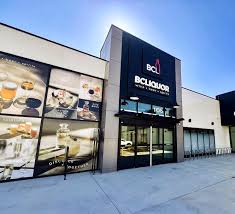
Introduction
The BC Liquor Store system plays a vital role in the retail distribution of alcoholic beverages in British Columbia. With over 200 locations, these government-owned stores not only provide access to a wide range of products but also contribute to provincial revenues and community welfare. Recent changes in policies and consumer preferences have made the understanding of BC Liquor Stores more relevant than ever.
Current Operations and Trends
Recently, BC Liquor Stores have experienced a significant shift in consumer behavior. According to a report published by the BC Liquor Distribution Branch (BCLDB), sales reached over $2.1 billion last fiscal year, reflecting a growing trend towards online shopping due to the pandemic. Stores have adapted by offering click-and-collect services and increasing their e-commerce presence to cater to changing customer preferences.
Moreover, there has been a notable rise in the demand for local craft beverages. A survey from BC’s Ministry of Agriculture indicated that 55% of consumers prefer locally produced wine, beer, and spirits, leading to a broader selection of BC-made products in stores. This has encouraged partnerships with local breweries, wineries, and distilleries, further enhancing the regional economy.
Policy Changes Affecting BC Liquor Stores
The government of British Columbia has recently introduced various policy changes impacting BC Liquor Stores. These include a focus on responsible drinking and the promotion of educational programs aimed at reducing alcohol consumption among youth. Additionally, the government has assessed potential expansions of the hours of operation and increased the flexibility of product offerings.
Importantly, issues around supply shortages have also surfaced due to global supply chain disruptions. Liquor retailers are seeking alternatives to ensure product availability and maintain customer satisfaction. As a response, BCLDB is working to diversify its network of suppliers.
Conclusion
The BC Liquor Store system is a critical backbone of alcohol distribution in the province, benefiting both residents and local businesses. As consumer preferences evolve, alongside ongoing governmental policy changes, the landscape of BC Liquor Stores continues to adapt and grow. Looking ahead, it is anticipated that an increased emphasis on local products, coupled with enhanced online services, will shape the future of alcohol retail in British Columbia. For readers, understanding these trends and changes not only enriches their shopping experience but underscores the role BC Liquor Stores play in the provincial economy and community initiatives.



